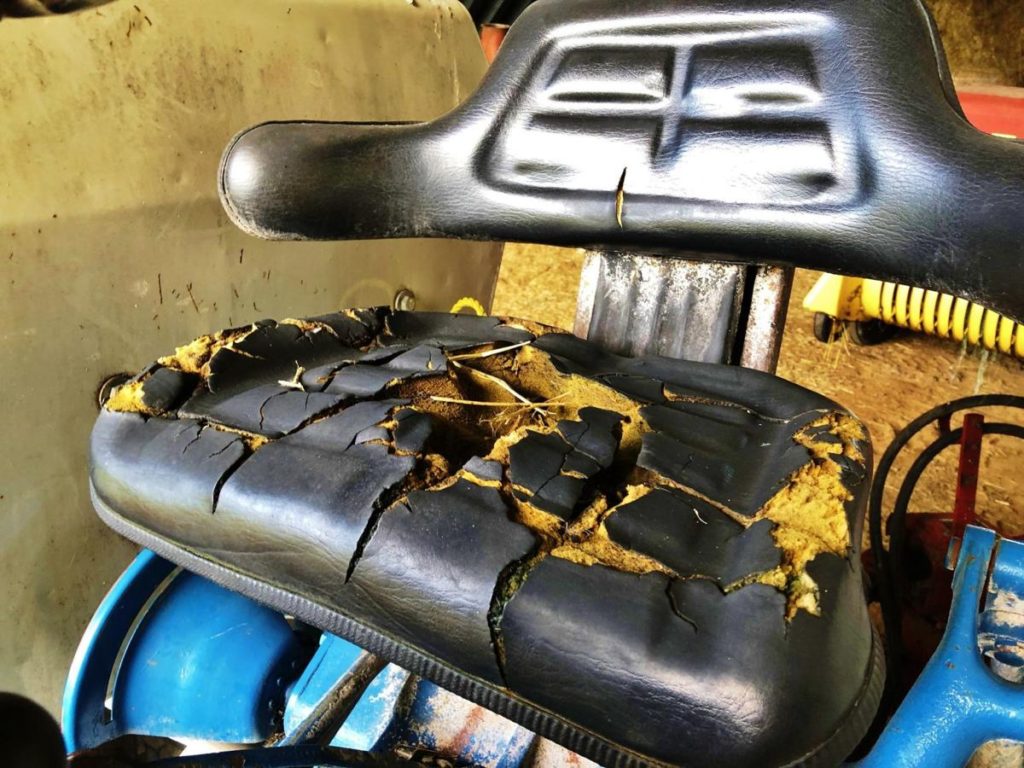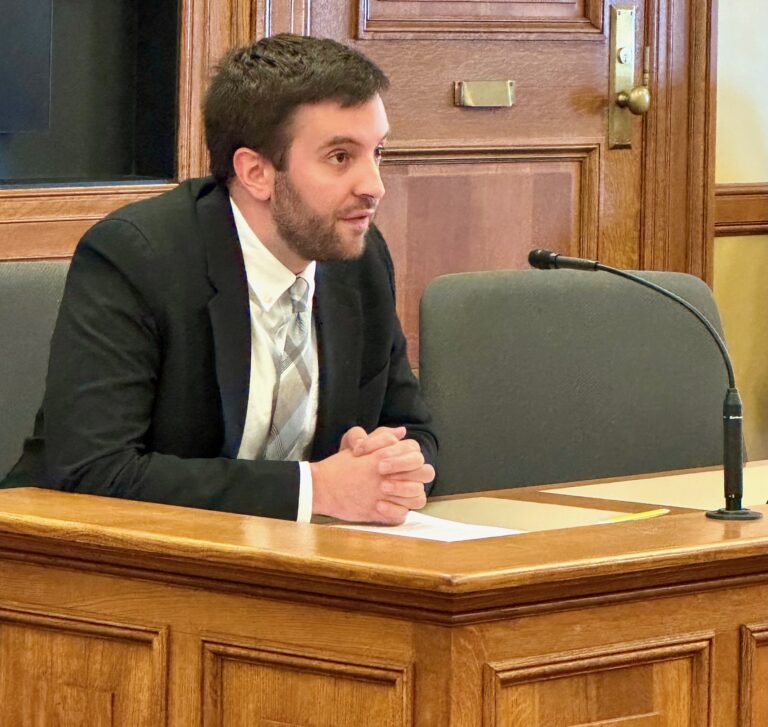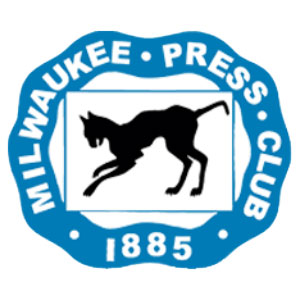Back Home by Chris Hardie
» Download this column as a Word document
» Download photos that accompany this story
» Chris Hardie’s headshot
If the measure of success is the ability to climb back up on the horse that bucked me, then I have the saddle sores to prove it.
The bell rang for round two of my seemingly endless and so far fruitless quest of putting up some hay this summer to feed my animals. Round one ended when Mother Nature delivered a knockout punch of 6 inches of rain on the hay. I was left with a few dozen moldy bales.
It’s a 30-year-old Ford 6600 tractor without a hood, with a dead battery, iffy hydraulics and a cracked seat that always leaves my butt wet. Climbing back up on it is hardly the iconic image of a cowboy hopping up on a saddle. But that’s what I did to answer the bell.

I had parked the tractor on an incline so I could start it by popping the clutch. But the old iron horse was temperamental so I was forced to resort to a battery charger once I ran out of speed.
My first order of business was to rake the now three-week-old hay that was still on the field. The regrowth was thick enough that I needed to rake the windrows twice to pull the old hay out of the new. Some of the ground on the lower-lying parts of the field was still wet from the recent deluge.
Surprisingly a lot of the hay was not rotten because it had not been raked prior to the rains and was able to dry. We put that field into large round bales, which will have little nutritional value. But it can always be used for bedding.
The forecast was a rare occurrence so far for this summer — three consecutive days of warm weather and sunshine. So we cut two smaller fields of about four acres each, of mainly grass. I planned to put those fields into small squares.
I hated raking hay when I was a kid because it was so boring, driving around and around a field with no distractions to occupy my busy young mind. Now I enjoy raking hay for the exact same reasons. It’s a rare opportunity to empty a busy old mind and fill it with self-reflection and contemplation.
The advancement of summer was all around me. There were small green apples developing in a tree next to the field. Black-cap raspberries are beginning to ripen, with blackberries to follow in a few weeks.
The hilltop fields were once woods. They were cleared by my great-grandfather and grandfather with a horse and stump puller — the same one I found this past year. On the same hill is an old hay loader that was once used to pile loose hay on wagons. Four generations of family have worked this land.
As I raked under the hot sun, dozens of monarch butterflies accompanied me. A healthy milkweed patch surrounds the fields, with monarchs flitting from plant to plant. Milkweeds are essential to monarchs for nectar. They also need the plants to lay their eggs; monarch caterpillars only eat milkweed plants.
Those amazing creatures made me realize that we can’t live in the past nor fret about the future. We must do our best today. Time marches on. We grow older. The cycle of life continues.
This is the first year I haven’t made hay with Dad, whose health won’t allow it anymore. He once worked from sunup to sundown putting up bale after bale in the barn. He set the tone for the work that was expected from others.
I didn’t realize at the time, but along with building muscle, it built character and a tough inner fiber that created a man out of this boy. I learned to work until the job is done and I’m satisfied to see the results. Equipment breaks down and, as they say, stuff happens. But I roll up my sleeves, dirty my hands and move on.
I finished raking the hay and retrieved the baler. The hay was dry. No rain in sight. All systems go.
I had only a few bales into the wagon when I smelled burning leaves — again. My suspicions were confirmed. A bearing in the thrower chute was burned out. I shut the baler down and headed for home.
Plan B was implemented; the hay was put into round bales. New bearings are on the way — as long as I need to remove the shaft I might as well replace both of them.
My hands will become greasy, my knuckles will be scraped and my patience will be tested. But I’ll do my best to repair the baler for the next time.
It’s what I was taught to do.
Chris Hardie spent more than 30 years as a reporter, editor



